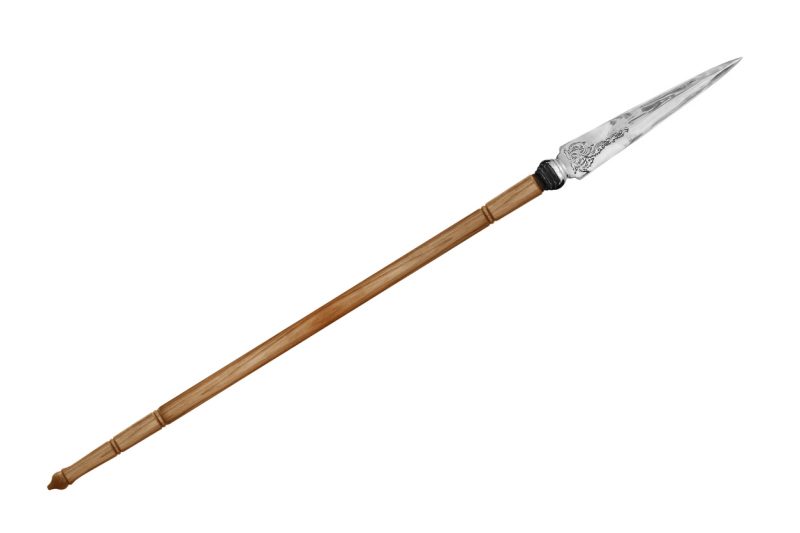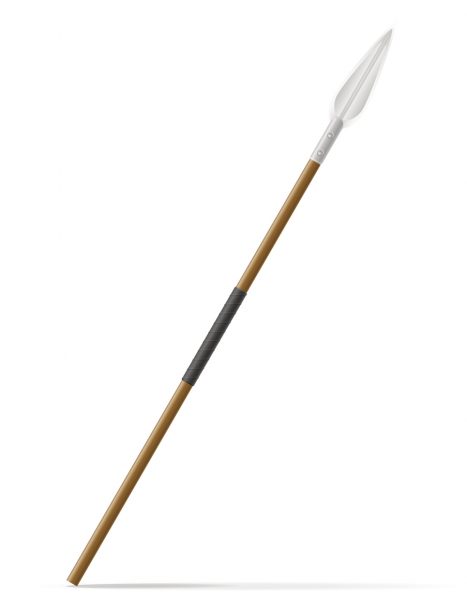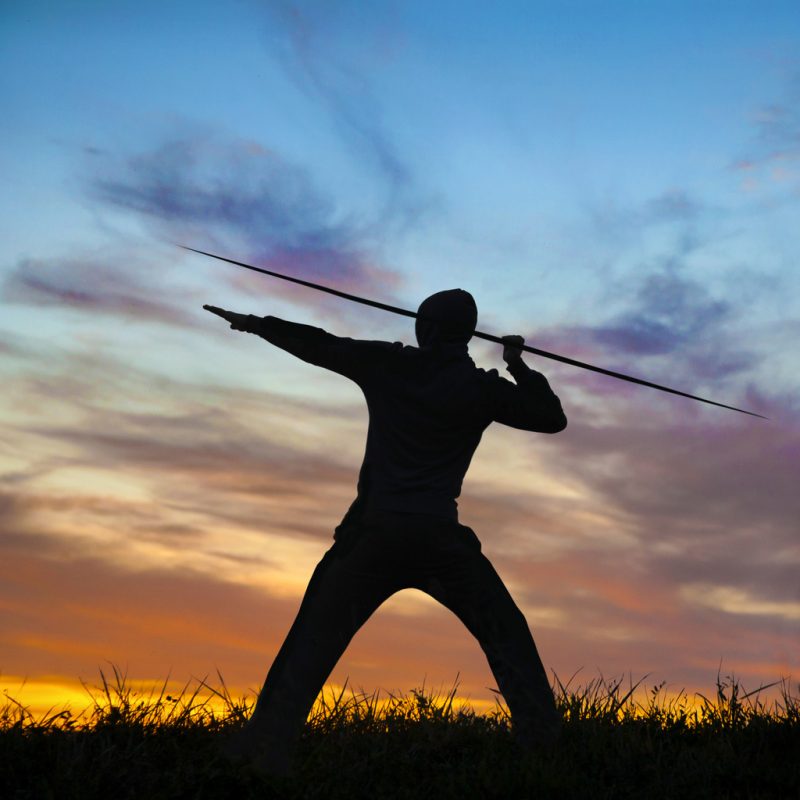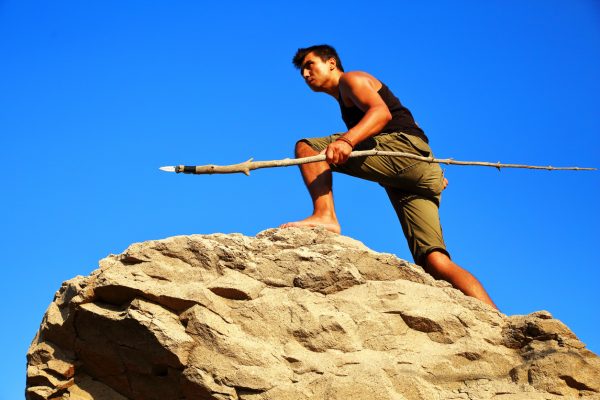Ancient Weapons – The Many Iterations of the Spear
The spear is probably one of the oldest weapons in the history of warfare and hunting. If we look back in history, the knife was probably the oldest fabricated weapon – created as early man learned how to chip stones to make an edge.
While originally intended as a tool, it probably didn’t take those early ancestors of ours a whole lot of time to figure out that their favorite tool could also be used as an effective weapon.

Attaching that early stone knife to a stick to extend the reach was a logical progression that was bound to come. The only real question would be how long it would take for someone to come up with the idea and then figure out a way of tying it on there.
Of course, spears can also be made from sharpened sticks, leaving the rock knife out of the picture altogether. It’s hard to say which came first as sharpened sticks can be found in nature; but even if we assume that the sharpened stick was the first spear known to man, the idea of making a stone point for the spear was another logical progression for people who already knew how to knap stone – one that would be especially useful against dangerous animals.

While mankind has been beating and cutting up one another ever since Cain hit Abel over the head with a rock, we actually began using those weapons to kill animals before using them to kill our fellow man. Even Cain had used knives for slaughtering and butchering lambs before using that rock to kill his brother.
Yet, anything that can be used for killing animals can be equally effective for killing people – maybe even more effective because human beings don’t have sharp fangs and claws to fight back with. We are unique in all of nature in our dependency on tools.
The Spear as a Weapon
Historically, spears have been one of the most common weapons used throughout the ages. While the simplicity of design and manufacture could have something to do with this, the ability of the spear to last through the ages attests to its effectiveness as a weapon.
As weapons go, the spear is extremely simple. Consisting of nothing more than a shaft and point at its most basic level, spears can be modified to have a sharper and more deadly point, as well as to have a secondary point or weighted ball at the butt end. This served as a counterbalance, making the weapon easier to use as well as providing a secondary means of attacking with it.
One of the ways this secondary point could be used was to ensure that any enemies being walked over were truly dead. Reversing the spear to use the primary point to stab an enemy on the ground could leave you defenseless, while using the secondary point made it easy to swivel the point back down and stab an oncoming enemy.
Basically, the spear is a stabbing weapon and is much more likely to be used two-handed than one-handed. The big advantage of a spear when used two-handed is that it can be maneuvered incredibly quickly, allowing the wielder to defeat someone with a sword by parrying their blow and then driving home to stab them.
However, when the spear is used one-handed in conjunction with a shield, that mobility is lost. In such a case, the only chance that the spearman has of survival is by working together with other spearmen in a formation.

Working in a formation, like the 300 Spartans and few thousand other Greek warriors did in the Battle of Thermopylae, gave spearmen a huge advantage – especially if they were well-trained to work in that way. Whereas sword-carriers will attack the person in front of them, a spear can be used effectively for attacking the person in front of the wielder’s neighbor. This gives them a real opening for their thrust, as well as confusing the enemy ranks.
Adaptability of the Spear
Not only is the spear one of the oldest weapons known to mankind, but it has also easily been one of the most adaptable. If we look back through history, we find countless versions of the spear as people modified its design to meet their specific needs.
Most of the time, adaptations have involved changing the length. A spear needed for fighting against heavy infantry might be six to eight feet long, while one used to defend against horsemen would need to be 12 feet long or longer. The jousting lance, which some would declare the epitome of spear design, was typically about 14 feet long.

While the primary purpose of the spear was to be a stabbing weapon, it also served a secondary purpose as a ranging or thrown weapon. The Roman legions were probably the best at this and carried the javelin, which was a lightweight, tapered, balanced spear specifically adapted for throwing. Yet, while spears designed for throwing were lighter weight and balanced, any spear could be thrown. In the case where a spear formation was broken up by combat losses or a cavalry charge, the spearmen would throw their spears before reaching for a sword, ax, or other weapon hanging from their belt.
Polearms, developed specifically for use by men on foot when battling against mounted cavalry, are an extension of the spear. While there are many variants of polearms, they essentially combined the spear and the ax or the sword and the spear, giving the infantry soldier the ability to fight by both stabbing and slashing, thereby improving their chances of defeating their enemy and surviving.
The Spear in a Survival Situation
Today’s weapons make the spear obsolete. Even the longest spears never stood a chance against a bullet, which explains how they faded into the dustbin of history. Yet, in a situation where the use of firearms is curtailed, either due to a shortage of ammunition or the need for silence, there might be a place for a spear. I know I’d rather arm myself with a spear than a tomahawk, both for its versatility and its effectiveness.

Another thing is that anyone bugging out is probably going to need some sort of walking stick anyway, especially if they are going to be crossing rough terrain. If that’s the case, then why not use a spear as your walking stick rather than just a plain stick? While no match against firearms, it gives you a weapon in your hand, while not impeding your ability to walk while carrying a loaded backpack. Should you need to grab a gun, it’s not a problem to drop your spear in order to do so.





